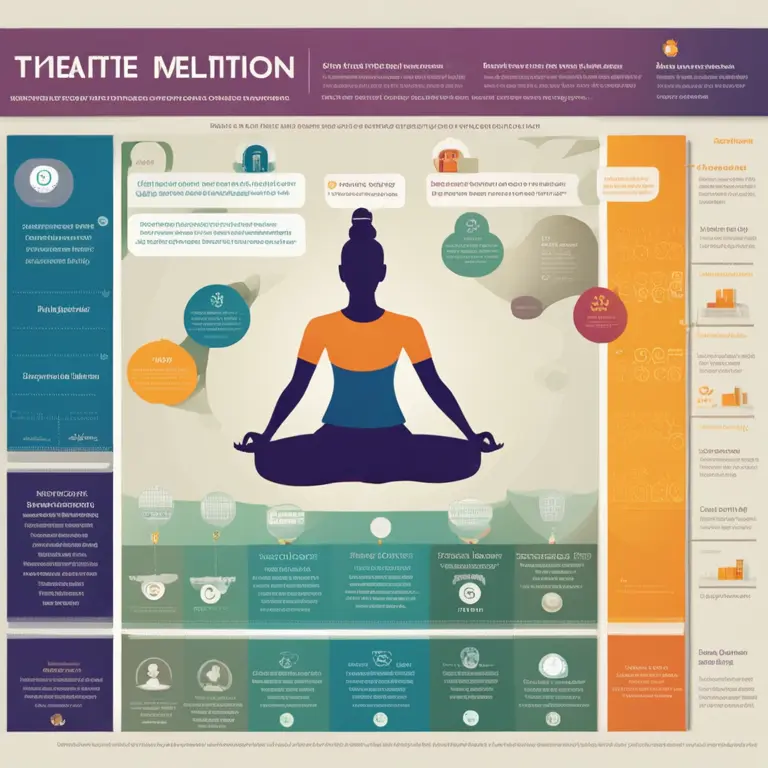
Meditation Versus Transcendental Meditation: A Comparative Insight
Dive into the nuances that differentiate traditional meditation practices from transcendental meditation, and understand how they cater to individual needs for tranquility and self-discovery.
article by Hina Kurosawa
Meditation: A Versatile Practice
Meditation, a practice rooted in ancient traditions, has been a cornerstone for those seeking peace and mental clarity. In the 21st century, its popularity has only soared, evolving to accommodate various schools and techniques. From mindful breathing to guided visualization, meditation serves as an umbrella term for exercises intended to develop concentration, emotional positivity, and a calm seeing of the true nature of things. Its adaptability allows individuals to incorporate it into their daily routine, whether it be through a few minutes of deep breathing or a longer session aimed at profound contemplation. Its widespread acceptance lies in its simplicity and effectiveness, making it an integral part of many people's lives.

The Emergence of Transcendental Meditation
Transcendental Meditation (TM), introduced by Maharishi Mahesh Yogi in the mid-20th century, stands out as a distinct form of meditation. Unlike traditional techniques that require concentration or contemplation, TM emphasizes the concept of effortless transcendence. Practitioners of TM are taught specific mantras, which they silently repeat during their meditation to foster a unique state of restful alertness. Research studies over the years have pointed to TM's benefits, including reduced stress, enhanced cognitive function, and overall wellbeing. As of 2024, TM continues to gain traction among those seeking more structured meditation practice, guided by certified instructors.

Meditation Versus TM: The Key Differences
Comparing traditional meditation with TM reveals distinct differences primarily in approach and technique. While traditional meditation often employs a variety of methods such as focusing on the breath, body scanning, or observing thoughts and feelings without attachment, TM's approach is consistent, utilizing a specific mantra-based practice for all individuals. The “effortless” aspect of TM is what sets it apart, supposedly allowing practitioners to access deeper levels of consciousness without mental exertion. Another notable difference is the structured TM course and the requirement for a personalized mantra received from a trained instructor, contrasting with the more flexible and self-directed nature of conventional meditation practices.

Choosing the Right Path
When considering traditional meditation versus TM, it's essential to reflect on personal preferences and goals. Are you looking for a self-guided practice that you can adapt to your needs, or do you require a structured program with personalized guidance? Perhaps you're seeking techniques to manage stress, improve concentration, or explore spirituality more deeply. Both practices offer unique benefits, and individuals may find one more suitable than the other based on their objectives and temperament. As with any endeavor for personal growth, the best approach is often one that resonates most deeply with the practitioner's intentions and lifestyle.
Scientific Perspective in 2024
In recent years, both traditional meditation and TM have been the subjects of scientific inquiry, with numerous studies highlighting their respective benefits for mental and physical health. By 2024, advanced neuroimaging technologies have provided greater insights into how these practices impact brain activity and structure. For instance, research has shown that meditation can lead to changes in areas of the brain associated with attention, emotion regulation, and self-awareness. Studies on TM, in particular, have demonstrated its potential for reducing hypertension and anxiety, as well as for increasing psychological resilience. It's important for practitioners to stay informed of the latest research to understand how these practices can best serve their wellbeing.
Cultural and Social Impact
As society continues to grapple with high stress levels and the quest for inner peace, both meditation and TM have played significant roles in shaping cultural and social perspectives on self-care and mental health. In 2024, with mental wellness being a global priority, these practices are more than personal activities; they're societal movements promoting a holistic approach to health. By offering accessible tools for self-regulation and consciousness exploration, meditation and TM have influenced educational policies, workplace wellness programs, and community health initiatives. The impact of these practices extends beyond individual benefits, contributing to a broader cultural shift towards mindfulness and self-awareness.
Published: 1/15/2024
Modified: 1/15/2024
More predictions
Come back here soon to learn more about yourself and your future


Mindfulness Meditation: A Handbook for High Schoolers
Discover how mindfulness meditation can benefit high school students, enhancing focus, reducing stress, and promoting overall well-being.


Easing Loneliness with Mindfulness Meditation
Explore how mindfulness meditation can provide solace and connection to alleviate the feelings of loneliness.


Discovering Life with Meditation Mantras
Delve into the transformative power of meditation mantras to harmonize your mind, body, and spirit for a tranquil existence.